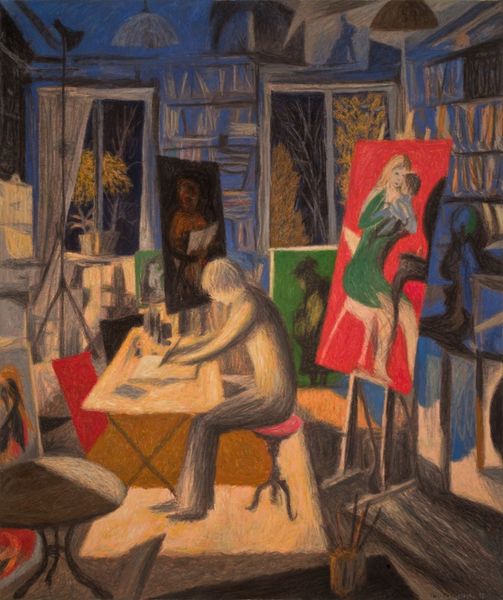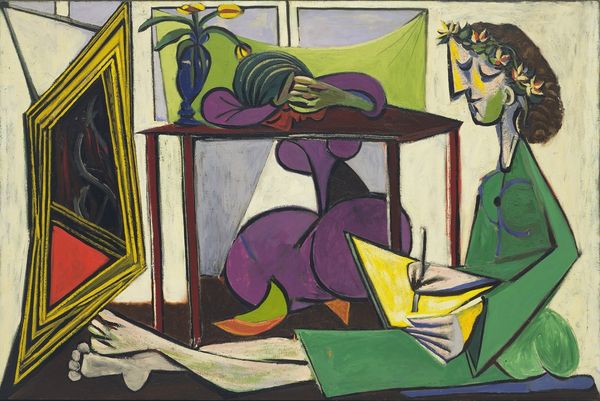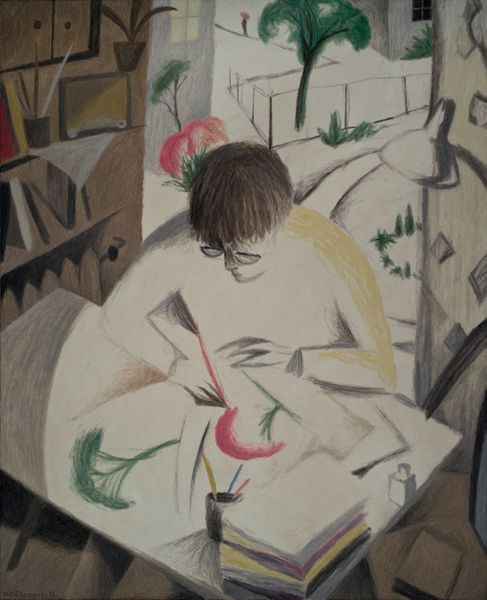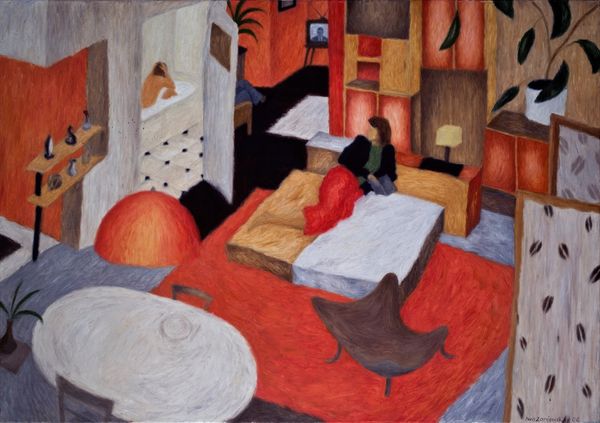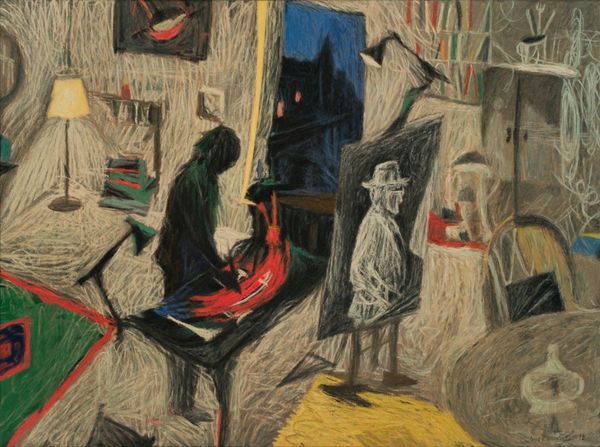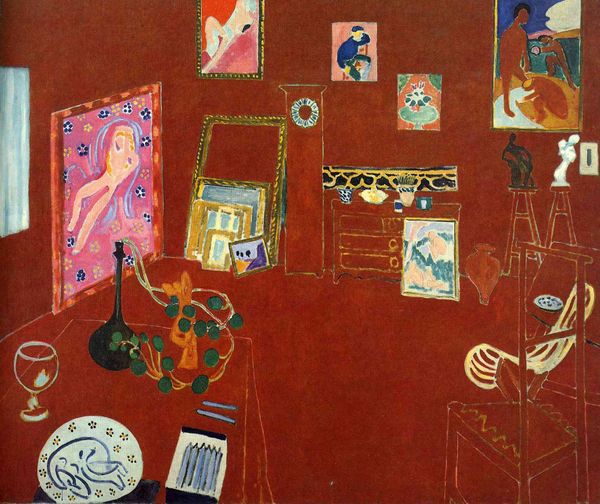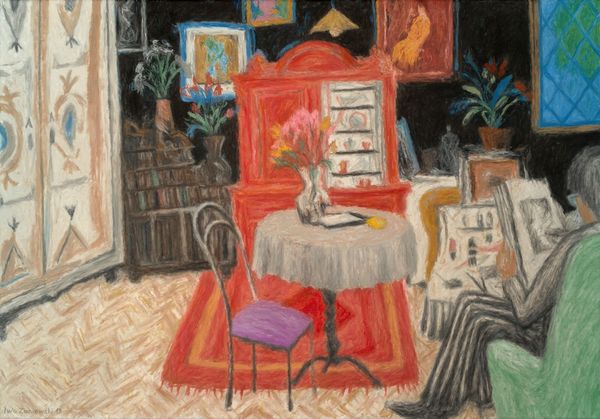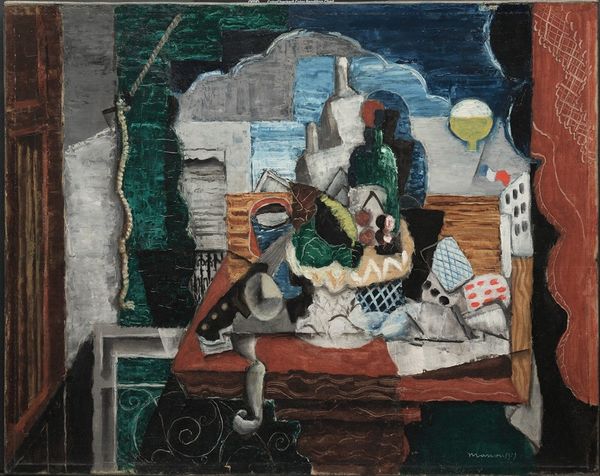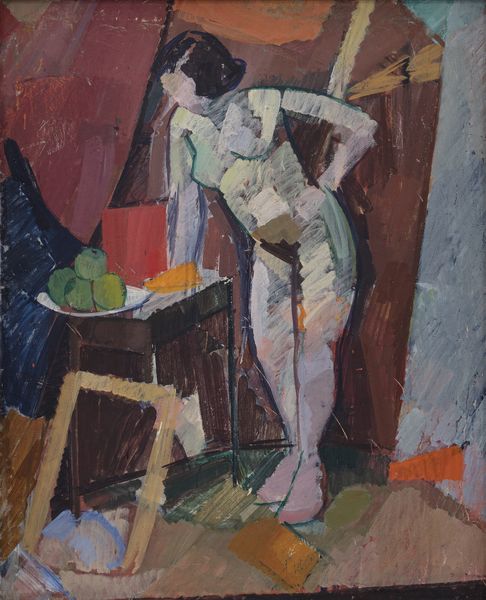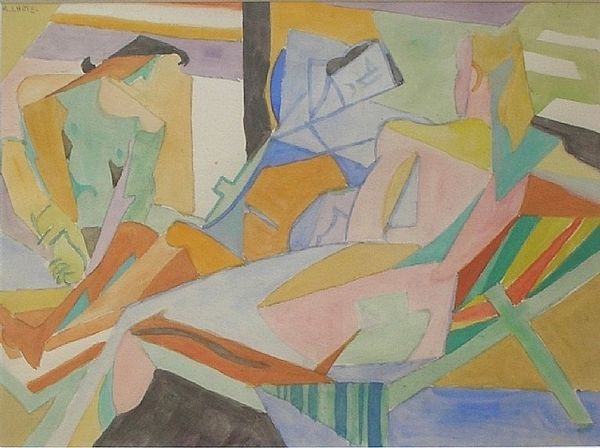
drawing, pencil
#
portrait
#
drawing
#
self-portrait
#
narrative-art
#
oil painting
#
pencil
#
expressionism
#
genre-painting
Copyright: Modern Artists: Artvee
Curator: Let’s turn our attention to Iwo Zaniewski's piece, titled "Black Painter," rendered in what seems to be primarily pencil, possibly with some other drawing media too. Editor: The scene feels almost dreamlike. There's this figure, shadowed, painting a brightly lit canvas, which looks like a portrait of a female figure. The interior depicted with cold colours juxtaposed with the vibrant painting... it's incredibly striking. What do you make of it? Curator: I see it as a compelling study of the artist within his studio environment. Note how the studio becomes a stage for this painter’s production, but the social context remains elusive, the figure blacked out. It hints at a specific engagement with both tradition and modern introspection. Editor: Exactly, and it makes me think about labor, and visibility. Here is a ‘black painter’ completely silhouetted as if he could only exists at the conditions of absence. This feels incredibly charged given our society’s complex history with Black artists in Western art. Curator: That's an insightful interpretation. I would say this piece participates to the common romanticisation of art creation in western culture. Notice the detailed attention the artist dedicates to sketching art supplies, giving special meaning to this particular labor force. Editor: Agreed. It opens the artwork for conversations around access and the commodification of artistic labour. The canvas in the artwork functions almost like a mirror, revealing the challenges surrounding identity, and the politics that often are tied to who gets to create, who is deemed as being 'artistic.' Curator: This play with perspective emphasizes how artists continually negotiate visibility and invisibility, in essence challenging the societal structures influencing the realm of art and culture. Editor: "Black Painter," isn't simply a scene in an art studio; it invites critical discussion regarding both the art industry and selfhood. Curator: This piece, for me, provides yet another historical record of artists using studios to display their production ecosystem and to represent art at large. Editor: Yes and beyond, reminding us that there are complex narratives around art creation to continue exploring.
Comments
No comments
Be the first to comment and join the conversation on the ultimate creative platform.
